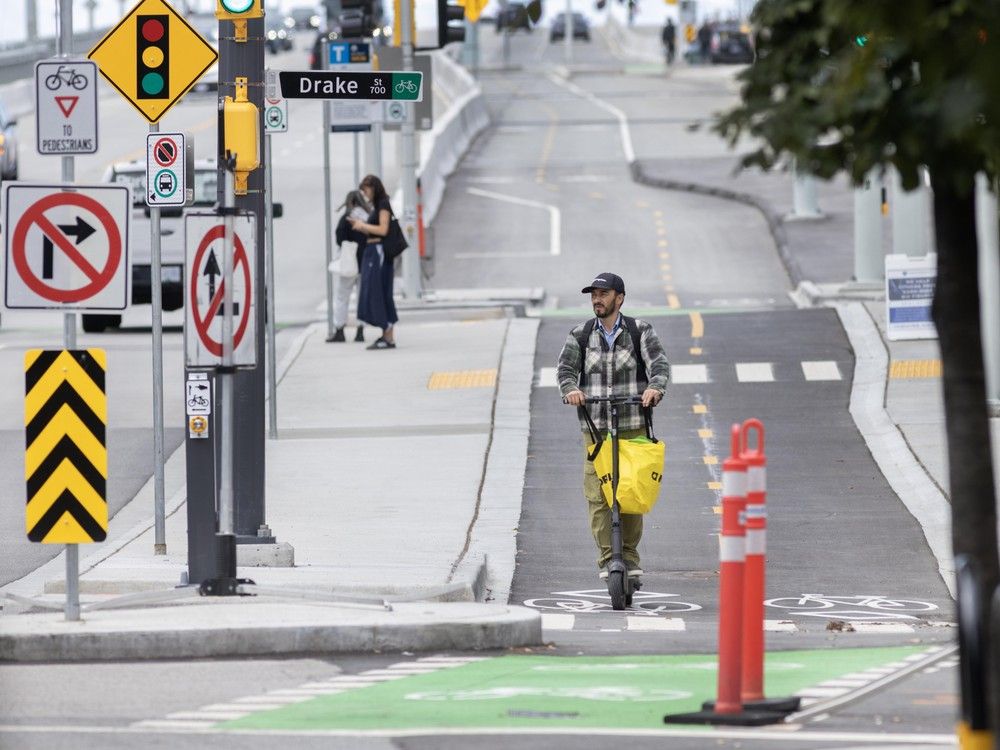
New data on transportation and emissions trends from Metro Vancouver’s air quality and climate committee shows hopeful signs that greenhouse gas emissions in the region are decreasing, thanks to more walking and cycling, remote working, greater use of public transit, and a steady shift toward electric vehicle (EV) sales.
A report backgrounder presented at a recent meeting shows that personal mobility continues to be the largest source of greenhouse gas emissions in the region and a significant source of other air pollutants that directly harm health.
But Morgan Braglewicz, an air quality planner for Metro Vancouver, said the new data — which came from the regional district’s greenhouse gas-tracking emissions inventory and TransLink’s 2023 Trip Diary survey — shows “some positive news.”
“A key trend we noticed in the data is that driving has been going down due to a few different factors, and can have a lot of benefits for communities in terms of physical and mental health, reducing congestion and time stuck in traffic, and a rapid uptake in use of electric vehicles in the region,” said Braglewicz.
“The primary reason for emissions going down was travelling less. More people working from home could be a factor as well.”
In 2023, 10 per cent of all trips in the Metro Vancouver region were made by transit. Trips by transit jumped in some parts of Greater Vancouver, such as in Langley City, which saw a 153 per cent increase in transit trips. Other areas with notable increases include Maple Ridge (110 per cent) and Pitt Meadows (80 per cent).
Braglewicz suggested regional growth along transit corridors and improved transit in the areas might be a factor in the increases.
While transit tips are down in Vancouver, Burnaby, North and West Vancouver, walking trips are up in those areas. The City of North Vancouver City saw the biggest jump in walking trips with a rise of 78 per cent, followed by Burnaby (64 per cent) and Vancouver (29 per cent). Langley City also reported a 106 per cent rise in walking trips.
From 2017 to 2024, trips by bike increased from 1.7 per cent to 2.4 per cent across the region. In some areas, the sharing of e-bikes among small personal mobility devices (such as bicycles, scooters, and skateboards) rose from 4.5 per cent in 2019 to 16 per cent in 2023.
More Metro Vancouver communities are also hosting shared bike, e-bike and e-scooter options, with bike share programs and bike share trips accounting for 2.8 per cent of all bike trips in 2023.
“Another big highlight is the uptake of EVs in the Metro Vancouver region, which has continued to be a North American leader,” said Braglewicz.
EV sales could be a continued driver of greenhouse gas emissions reductions moving forward, said Braglewicz.
Braglewicz said the committee makes the data available to all regional municipalities to support infrastructure planning and understand trends, including planning for EV charging.